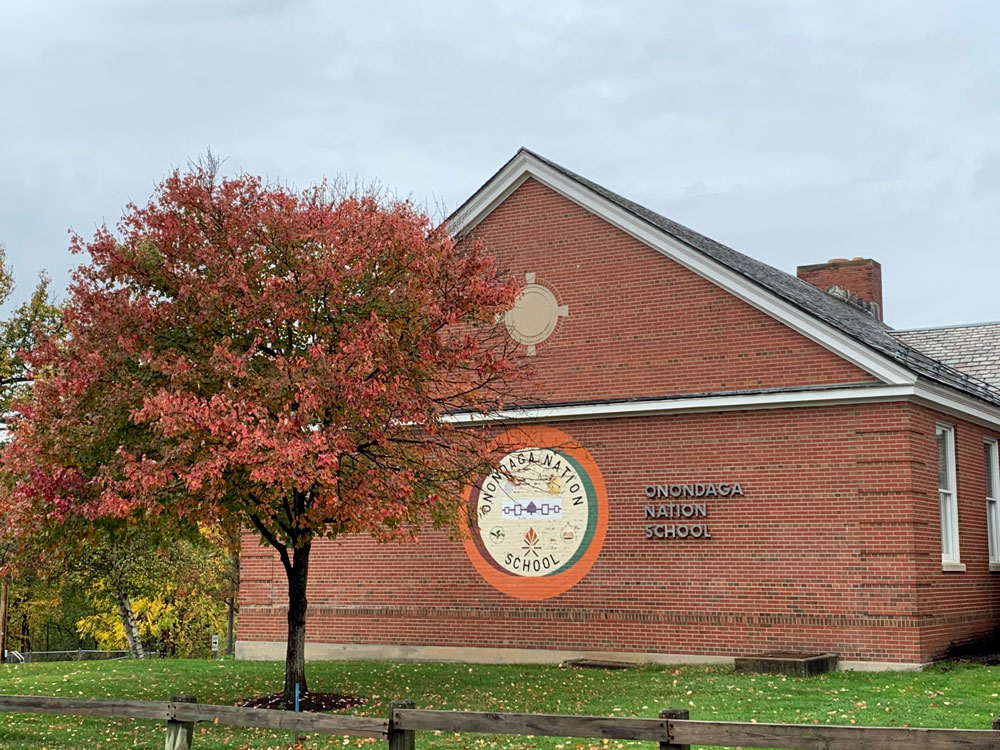Community Action: How To Help ONS Receive Critical Funding
The Neighbors of Onondaga Nation (NOON) are asking for the community’s help in contacting four key leaders in the New York State legislature to push for increased funding for each of the three Indigenous Schools on Indigenous Territories, as requested by the Superintendents of these districts. Hundreds of people across New York State have already joined the effort to significantly increase funding to these three schools that have been significantly underfunded for decades. As a result of these efforts, Governor Hochul included $35.7 million for the St. Regis Mohawk School ($17.8 million), the Tuscarora School ($11.8 million), and the Onondaga School ($6.1 million) in her Executive Budget. The NOON is hoping to push the full $20 million in funding in order to help address critical infrastructure and maintenance needs, and assure equitable learning opportunities for these students.You can use this easy Online Letter Writing Tool to quickly send emails to each of these four legislators in one simple step:
Senator Andrea Stewart-Cousins
Senate Majority Leader
(518) 455-2585
(212) 298-5585
Senator Liz Kruger
Chair of Senate Finance Committee
(518) 455-2297
(212) 490-9535
Carl Heastie
Assembly Majority Leader
518-455-3791
718-654-6539
Assemblywoman Helene Weinstein
Chair of Assembly Ways & Means Committee
518-455-5462
718-648-4700
You are also encouraged to call their offices.

You can find lots of background information online, and here are some key points:
- The LaFayette Central School District had originally requested $20 million in funding for infrastructure repair and renovation based upon the results of two separate building condition surveys. While the $6.1 million allocation from the Governor’s budget helped address critical needs such as roof/window replacement and HVAC upgrades, many other concerns still remain.
- The three School Districts are under contract with the NYS Education Department to educate Indigenous students living on their own territories, fulfilling treaty obligations of the Federal Government under the 1784 Treaty of Fort Stanwix to provide for the education and health of the Haudenosaunee. New York State is responsible for the buildings which house these schools and due to historic neglect, they are in a shameful state of disrepair.
- We are New York State residents, acting in the spirit of the Two Row Wampum Treaty, the first treaty between the Haudenosaunee and settlers and the basis of all following treaties. We're asking leaders in the legislative budgeting process to help us fulfill our shared responsibility to honor the treaties with our Haudenosaunee neighbors and address the unjust conditions at these schools.
- The Onondaga Nation School (Lafayette School District), the Tuscarora Nation School (Niagara Wheatfield School District) and the St. Regis Mohawk School (Salmon River School District) each have significant problems as a result of this lack of funding for maintenance and capital improvements. These include crumbling brick, poorly functioning heating and cooling systems, dangerously degraded concrete, lack of adequate space and much more. The superintendents of those districts describe them as among “the worst school building conditions in NYS.”
- New York’s Every Student Succeeds Act (ESSA) plan, approved in January 2018, emphasizes fostering equity in education for all students and ensuring that all students succeed and thrive in school no matter who they are, where they live, where they go to school, or where they come from. It specifically mentions historically disadvantaged students. The current situation clearly violates this commitment.
- The current funding stream for these three schools is mixed in with funding for other marginalized students who attend schools for students with disabilities. Those students also deserve adequately-funded schools.
- The New York State Legislature has taken important steps to address inequality and build a state that fairly serves all. This small step is an important way to continue that critical work.





